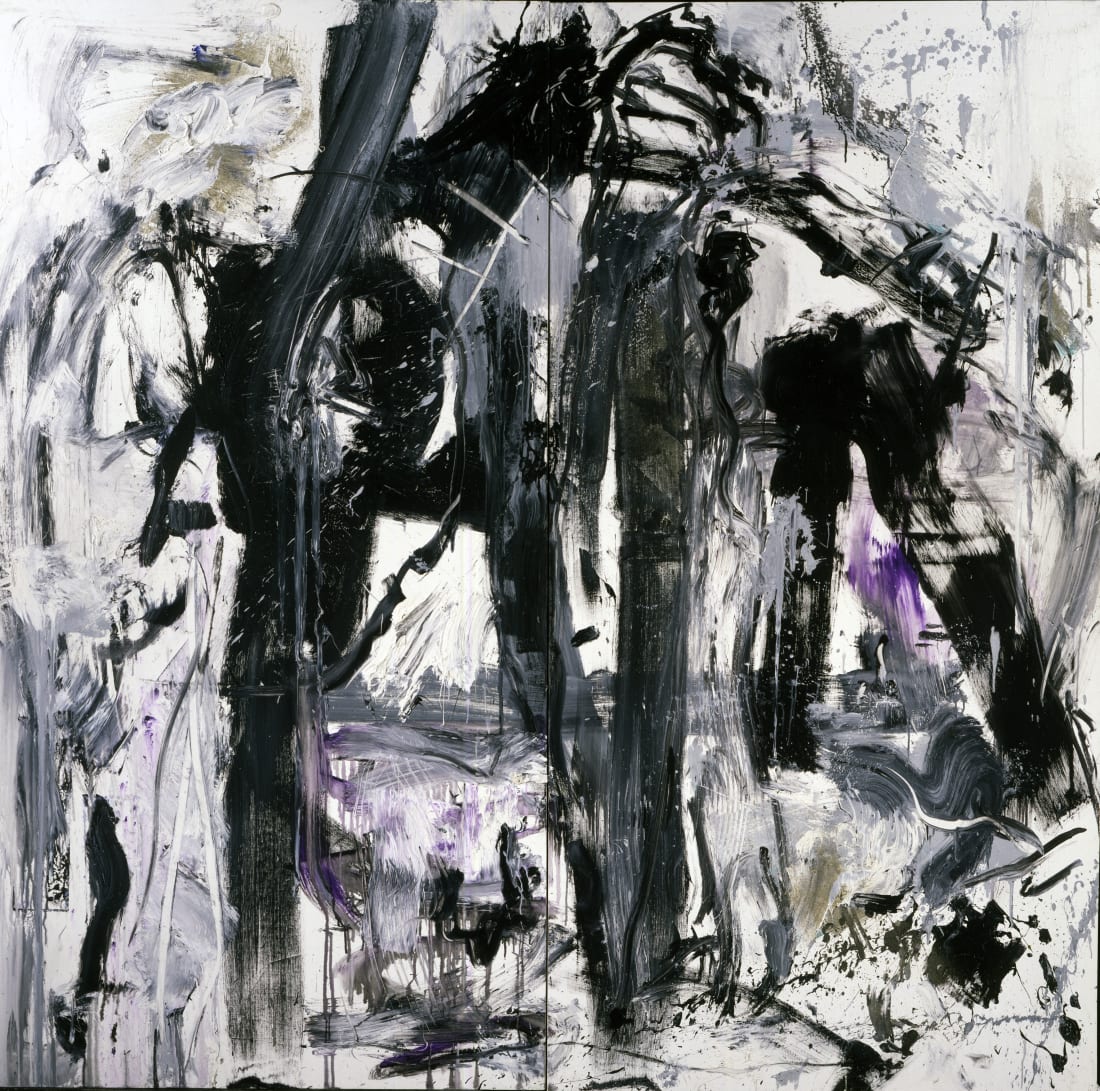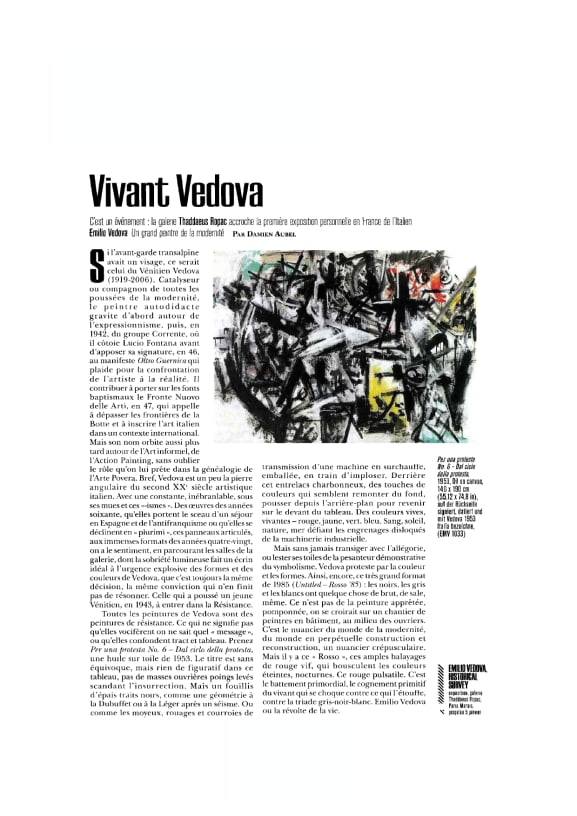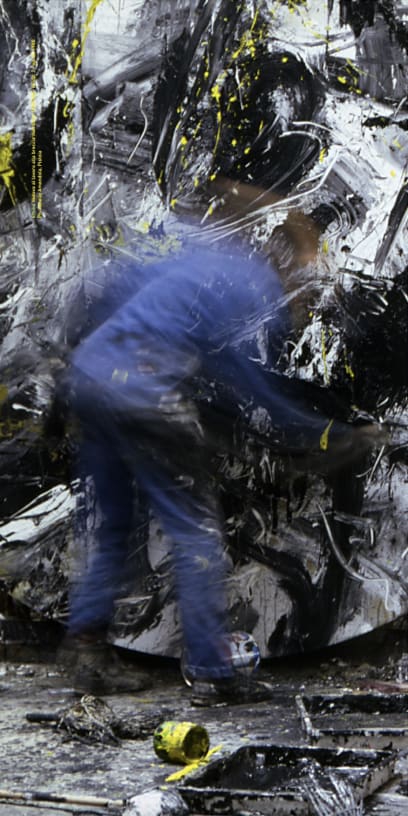

Emilio Vedova Foundation
Overview
'I must always get to the painting directly, maybe by jumping or sometimes with the help of a small stool [...] when I work, I move, I get physical, I jump and attack the canvas and the surrounding space.'
Emilio Vedova – a politically engaged Venetian artist who believed that revolutionary art had to be abstract – is regarded as one of the most influential Italian artists of the second half of the 20th century. He joined the Milanese anti-fascist group Corrente in 1942 and co-signed the Oltre Guernica manifesto in Milan in 1946, which urged artists to engage with reality while moving beyond figuration. His expressive strokes and smears of paint convey a raw and violent reaction to the political reality of the post-war period. He pushed painting into new territories with his visceral and gestural works that engage the viewer and redefine the space they inhabit.
In the late 1950s, Vedova was associated with French Informel and later with Action painting and the resurgence of expressionism, yet he has always defied categorisation. Largely self-taught, he learned to draw and paint by sketching Venetian churches and frescoes, particularly those of Tintoretto who was a key inspiration to the artist throughout his career. Although Vedova split his time between Venice and Berlin for many years, his work remained anchored in the city of his birth and its painting traditions. His paintings from the 1950s and 1960s were sensitive to contemporary political developments, such as Franco's nationalist regime in Spain and the revolutionary protests across Europe in 1968.
Emilio Vedova – a politically engaged Venetian artist who believed that revolutionary art had to be abstract – is regarded as one of the most influential Italian artists of the second half of the 20th century. He joined the Milanese anti-fascist group Corrente in 1942 and co-signed the Oltre Guernica manifesto in Milan in 1946, which urged artists to engage with reality while moving beyond figuration. His expressive strokes and smears of paint convey a raw and violent reaction to the political reality of the post-war period. He pushed painting into new territories with his visceral and gestural works that engage the viewer and redefine the space they inhabit.
In the late 1950s, Vedova was associated with French Informel and later with Action painting and the resurgence of expressionism, yet he has always defied categorisation. Largely self-taught, he learned to draw and paint by sketching Venetian churches and frescoes, particularly those of Tintoretto who was a key inspiration to the artist throughout his career. Although Vedova split his time between Venice and Berlin for many years, his work remained anchored in the city of his birth and its painting traditions. His paintings from the 1950s and 1960s were sensitive to contemporary political developments, such as Franco's nationalist regime in Spain and the revolutionary protests across Europe in 1968.
Inspired by a three-month trip to Mexico at the beginning of the decade, Vedova's works from the 1980s reveal the influence of the country's vast landscapes and monumental, richly coloured murals. The artist introduced an explosion of colour into his palette that enlivened the graphic contrasts between black and white. He engaged increasingly with the exploration of existential questions, using gestural abstraction as a vehicle for expressing the complexity of lived human experience. In later years, he experimented with diverse media on a large scale, incorporating light, glass and metal into complex works that activate the surrounding space, such as his hinged sculpture-paintings.
Vedova made his debut at the Venice Biennale in 1948 and, from that point onwards, would become a regular exhibitor: in 1952 he had a room devoted to his work, in 1960 he won the prize for Italian painting and, in 1997, the Golden Lion for lifetime achievement. He was the Italian representative at the first documenta in Kassel in 1955, and his work was exhibited there again in 1959, 1964 and 1982. He was also a dedicated arts educator, teaching at the Deutsche Akademischer Austausch Dienst, Berlin (1963–65); Internationale Sommerakademie, Salzburg (1965–69, 1988); and Accademia di Belle Arti, Venice (1975–86), as well as lecturing in the USA in 1965 and 1983. His work has been exhibited at major institutions, including the Arnulf Rainer Museum, Baden (2020); Palazzo Reale, Milan (2019); Centre Pompidou-Metz (2019); Museo Novecento, Florence (2018); and Museum Küppersmühle für Moderne Kunst, Duisburg (2016). The Fondazione Emilio e Annabianca Vedova, created by the artist and his wife, continues to promote his life and legacy, highlighting Vedova's importance in the history of 20th-century art.
Videos




Kunstwerke / Werke
Ausstellungen
Publikationen

Emilio Vedova

















































































































































































































